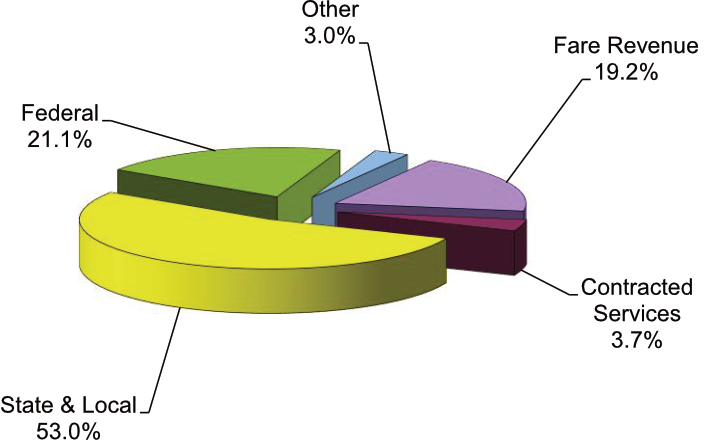Transit 101 is sponsored by 350 Sacramento and is the educational arm of the transit community. Hosted by Glenda Marsh and Joann Fuller, the recent budget workshop provided information from SacRT staff and community discussion. To be notified of future workshops, email Glenda at marshmellow8562 at yahoo.com. These will also be posted here when we remember, and on our calendar. You can see our previous Transit 101 posts and yesterday’s post on the workshop that included five slides of interest.
Henry Li, SacRT’s General Manager, led off with an overview. He related the Strategic Vision board meeting in February where the board seemed very supportive, and some board members asked to go beyond what staff was suggesting. SacRT has asked Sacramento Transportation Authority, the entity which developed the failed Measure B, to hold off on their project list until SacRT has a chance to do community outreach, ongoing, and surveying to occur soon, so that SacRT can provide a better project list. SacRT will ask for 1/3 of a cent, which if the future measure is the same levy as the last, would be 2/3 of the measure, for a total transit allocation of 1/2 cent combining Measure A and the future measure. The most telling graphic for this issue is the peer comparison chart.
David Goldman, SacRT’s Director of Management & Budget, presented the 2017 expenditure budget, which totals $162.5 million. The biggest category by far is salaries and benefits, as is true of almost any organization. A similar but not same chart is below (this one from the 2016/17 budget document). He also presented the state of good repair document and talked about some of the items on it.

Brent Bernegger, SacRT’s Chief Financial Officer, presented on revenue sources. Fares provide 19%. State and local funding, which includes Measure A, is the largest at 53%. The federal contribution, which SacRT uses almost entirely for operations, provide 21% but is the amount very much on everyone’s mind with the uncertainty in the president and Congress. There are indications that too many politicians loves grand infrastructure projects, but don’t much like transit and rail, and don’t think the federal government should fund operations at all. There are federal regulations about fares that require half price discount fares for certain rider categories at certain times, but SacRT goes above those minimums. Some social service agencies purchase passes at a discount and distribute them to clients. Some large state agencies buy bulk passes and get a 60% discount. Smaller state agencies and others don’t get a discount but provide passes to employees at a discount. There are programs for Los Rios Community College System and school districts. Free and reduce lunch program students can get 75% off passes. It is possible for a tax measure revenue source to subsidize fares so that the state-required fare recovery standards are still met, but the failed Measure B did not propose that. The chart below is from the 2016/17 budget document, not from the presentation.

James Drake, SacRT’s Service Planner, presented the existing and potential expanded service and frequency maps. He talked about how the light rail network is the backbone of the entire system, both in original design, current use, and future expansion. These two maps are also on the previous budget workshop post.
There were several other SacRT senior staff in attendance, both to listen and to answer specific questions as they came up.
These presentations were followed by a long question, answer, and statement period. It is difficult to capture all of this, so the list below is some of the topics, and some of the answers, not comprehensive
- Henry Li said which light rail extensions are prioritized is a community decision (it wasn’t in the past)
- Steven asked about other revenue sources including payroll tax
- Henry Li mentioned downtown circulator, also mentioned distance based fares
- staff confirmed that tax measures can subsidize fares so that they still meet the state 23% fare recovery standard
- mobile app was developed for free but required a lot of staff support (Passport is vendor); now have a revenue share of 7%, will be another vendor later (didn’t catch name) with 2% share
- Tamie asked what the total cost of fare collection is, both internal RT and external other agencies; answer is that it is significant but no known
- Dan asked about Measure B TEP lack of detail for RT and distinction between capital and operations/maintenance; Henry said there will be more detail in next measure
- six month pilot Uber, etc. is near end, was funded with a GGRF grant (Greenhouse Gas Reduction Fund); original goal was for events, but is now any day, any time
- SacRT is going to do a survey before the new measure goes up, but didn’t specify when (the newly formed Sacramento Transit Riders Union is also doing a rider survey which will contribute to a clearer definition of needs)
- Russell talked about how riders and transit dependent are not part of the conversation
- Dan mentioned 350 Sacramento Community Forum on Carbon Zero, and how it fits into our concerns about transit and the forming Sacramento Transportation Choices coalition, but people need more info
- discussion about how to have an influence on Sacramento Transit Authority (SacTA), Patrick Kennedy is new chair and may take a more progressive approach, Henry Li said the SacTA board realizes there were issues not addressed in planning for the failed Measure B
There will probably be more information available from Transit 101 in the near future.